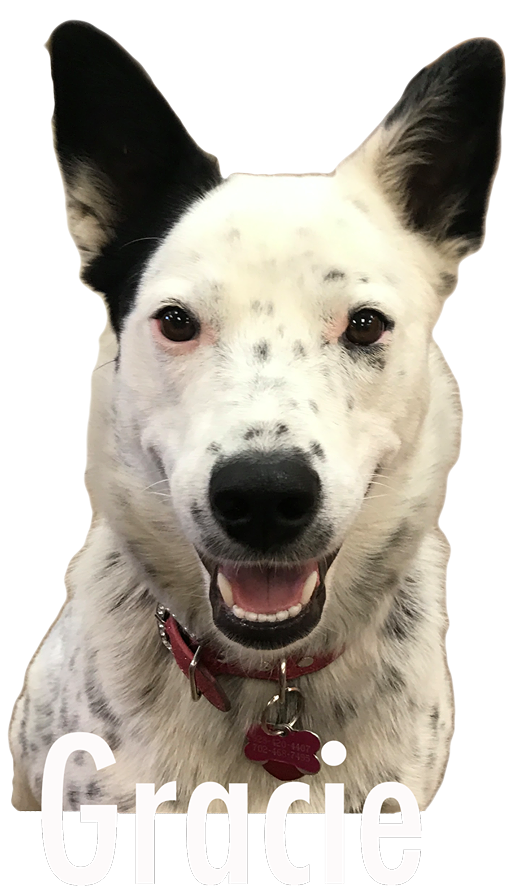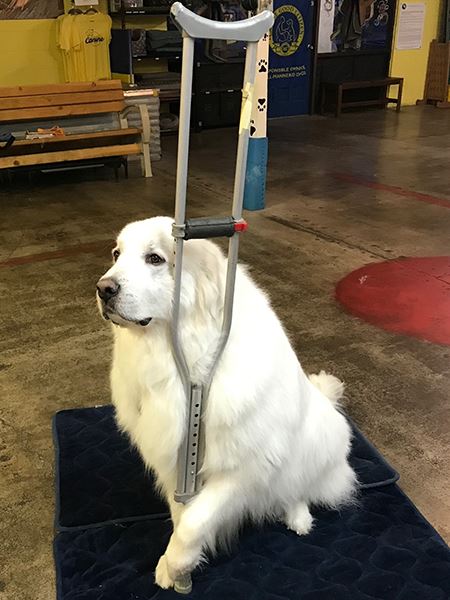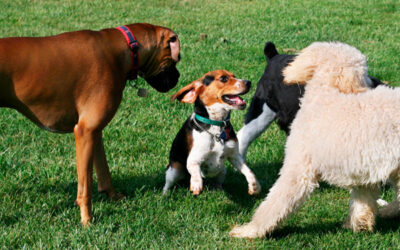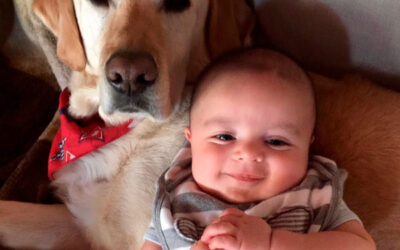Kari Cleland is one of the trainers and owners at The Complete Canine who specializes in service dog training. She has worked in zoos with very dangerous animals, as well as for the military and has been training dogs for over 40 years. Her experience includes basic obedience, tricks, therapy and service dogs, with a speciality in service dog training for Parkinson’s Disease. Kari was a zoo keeper for over 35 years and obtained a degree in Exotic Animal Training and Management. She is an expert in training cats and helps solve pesky problems that others just don’t understand.
What makes a good service dog?
When training a Service Dog one of the things we are looking for is how attentive the dog is, one that is desensitized to life like noises and abnormal things. A canine that is over friendly would not be desirable, but a dog with confidence that is willing to work for their handler is ideal and there should be no signs of aggression. We want a dog that can take corrections but is sturdy with confidence to make those corrections and adjustments.
Are there certain breeds that could perform better than another? Or one you look at for specific things?
Medical alert dogs benefit from the ability to use their nose; Labrador, German Shepherd, Golden retriever, Border terriers, just to name a few. Brachycephalic breeds would not be ideal for this task.
Mobility dogs would benefit from being over 50 pounds in weight and more of a sturdy breed; Labrador, golden retriever, Standard Poodles, etc… If the task is not weight bearing, a smaller breed can suffice.
Psychiatric dogs are dogs that have a keen sense of smell and can complete more task work; Labrador, Golden Retriever, German Shepherd etc…
Can a rescue dog be a service dog?
Absolutely, but a service dog can benefit from the time with their mother as a young dog. In a perfect world, the dog would be 10 weeks to three years old due to the duration of time needed. Older dogs can do it, but they would have less time to work once they were fully trained. Knowing their background is imperative so we know they’re not aggressive or too timid to complete the tasks needed. Also, bonding with the handler can be easier at different ages, so the training is easier.
How long does it take to train a service dog?
Depending on what is needed from the canine, typically 18 months to three years. Arizona is one of the only states that gives rights to service dogs in training. However they do need to perform at least one task and are trained to go into the public. A service dog would never be sniffing in a store, barking or trying to solicit attention from anyone but the handler. Any establishment may ask even a service dog to leave if these behaviors are being breached.
What is the hardest type of service dog to train?
Seeing eye dogs by far. The tasks needed to be completed takes so much more time and effort and in fact, they are typically raised by puppy raisers and only 20-30% make it to the big league. Their training is so specific that it eliminates many dogs, however many become working dogs in other capacities.
What is an ESA?
An ESA “Emotional Support Animal” is an animal that helps someone feel comfortable primarily in their home. If a Therapist feels that their client would benefit from having an ESA at home to help with anxiety or depression they can write a letter stating this but this only helps with the fair housing act. Meaning a landlord or apartment building can not deny you from having an ESA. ESA’s do not have the same legal rights as Service dogs. The ESA pet is only allowed in pet friendly establishments and not allowed in planes, restaurants, grocery stores or any other establishment that allows only Service Dogs.
Questions? Contact completecaninetucson@gmail.com













